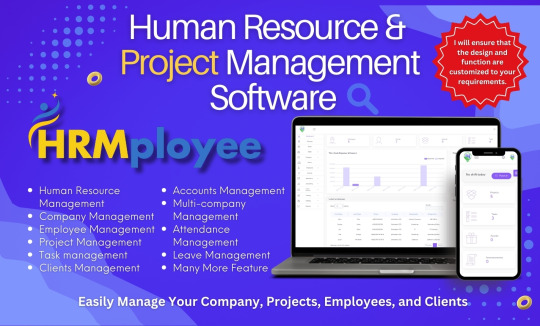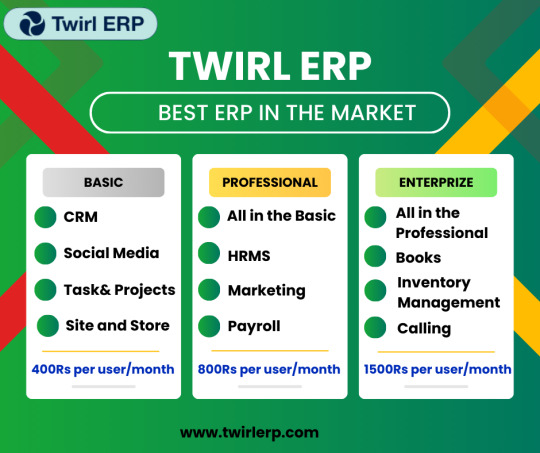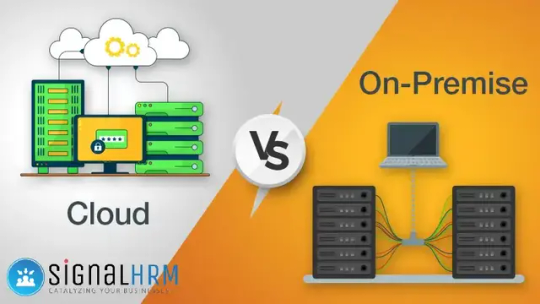#HRMS software
Explore tagged Tumblr posts
Text
How Ultimez Academy is Shaping the Future of Tech
#digital future#innovation#ai#it company#ultimez technology#technology#top tech companies#software company#hubli#hrms software
6 notes
·
View notes
Text
Day 2 at iSarva: Help Me Help You (Before My Boss Finds Out 😅)”If You Need Website, I’ll help you out

Hi there, I’m Thea – a Marketing Intern at iSarva Infotech Pvt. Ltd., and it’s only my second day on the job (yes, you read that right – day two!). While I’m still soaking in all the tech wizardry around me, my boss already gave me my first mission:
👉 Find people who need websites, apps, or any digital solution. If I don’t… well, let’s just say I’ll be in trouble 😅
🧠 So What Does iSarva Infotech Even Do?
We’re an IT software company based in India that builds and supports everything digital — From simple, elegant websites to complex enterprise-level software. Here’s a taste of what we do:
✨ Web Development – Clean, fast, mobile-friendly websites that actually work. ⚙️ ERP Solutions – Customized systems to simplify your operations. 🚀 Digital Marketing – Because just existing online isn’t enough. 🛰️ Cloud Services – Modern, scalable, and reliable. 🧭 GPS Tracking Software – Track, manage, and optimize on the go. 🌍 Offshore Development – Hire dedicated developers, without boundaries.
👀 Who Can We Help?
Small business owners 🧑💼
Entrepreneurs with a big vision 💡
Corporates with outdated tech 🏢
Startups who want to move fast 🚀
Anyone who wants to go digital in 2025
📣 Now Here's My Pitch
If you or someone you know needs a website, app, digital marketing, ERP, or software that doesn’t suck... 👉 Please DM me +91 99028 63697 I’ll connect you with the team (and maybe avoid the wrath of my boss 😬).
Check out our work here: https://isarvait.com
Let’s build something cool together. Your idea + Our tech = 🔥
—
#marketingintern #isarvainfotech #websitedesign #digitalagency #startuptech #internshipdiaries #indianstartup #ITsolutions #supportsmallbusiness #letsconnect
#uiux#website#web development#website design#hrms software#wordpress#weirdcore#ecommerce#software#technology#digital transformation#smart tech#computer#cell phones#laptops#technoblade#techinnovation#technique#tech#phones
2 notes
·
View notes
Text
HR & Payroll Solution for 2025 – Free, Powerful & Easy to Use
Managing HR tasks doesn't have to be complicated or expensive. With HR Globes, you get a powerful, free HR and payroll management software that simplifies your operations, improves accuracy, and saves valuable time.
Whether you're managing a 5-person team or scaling to 500, HR Globes is built to grow with you. Download it today, streamline your HR process, and focus on what matters most: growing your business.
Try HR Globes now — because smart HR should be easy, powerful, and free.

2 notes
·
View notes
Text

https://manxel.com/products/hrms
Manxel HRMS is a cloud-based Human Resource Management System designed to streamline and automate HR operations for businesses of all sizes. Developed by Curve Digital Solutions (SMC-PVT) LTD, Manxel offers a comprehensive suite of tools to manage various HR functions efficiently.
Chrome Stats+2APKCombo.com+2Google Play+2
Key Features of Manxel HRMS:
Employee Management: Centralized platform for storing and managing employee data, including personal details, job history, and performance records.
Payroll Processing: Automates salary calculations, deductions, taxes, and payment processing to ensure timely and accurate payroll management.
Attendance and Leave Tracking: Monitors employee attendance, working hours, vacation days, and sick leave, facilitating efficient workforce management.
tylertech.com+1hrm.manxel.com+1
Recruitment and Onboarding: Streamlines the hiring process by assisting with job postings, application tracking, candidate evaluation, and onboarding of new hires.
Performance Management: Enables setting goals, conducting evaluations, and managing employee performance to align with organizational objectives.
AI-Powered Insights: Utilizes artificial intelligence to provide data-driven insights for informed decision-making in HR strategies.
User-Friendly Interface: Designed with an intuitive and simple user interface to enhance user experience and accessibility.
Manxel HRMS is accessible via web and mobile platforms, allowing HR teams and employees to manage HR tasks on the go. The mobile application is available for download on the Google Play Store
2 notes
·
View notes
Text
Benefits of HR Automation for Large Businesses - SmartHCM
🚀 Is your HR team overwhelmed with administrative tasks? Learn how HR automation is revolutionizing workforce management across large-scale industries.
🔹 Enhance operational efficiency and precision 🔹 Reduce administrative and operational costs 🔹 Elevate the employee experience 🔹 Drive smarter, data-backed decision-making
Discover how automation empowers HR teams to become strategic leaders.
👉 Read the full blog here 🌐 Visit our website to learn more about SmartHCM’s solutions.

1 note
·
View note
Text
HRMS System: 7 Powerful Ways It Can Transform Your Business Operations

In today's fast-paced business environment, efficiency and productivity are paramount. One way businesses are achieving these goals is by leveraging Human Resource Management Systems (HRMS). These systems have evolved from simple employee databases to comprehensive tools that can revolutionize how businesses operate. In this blog, we'll explore seven ways an HRMS system can transform your business operations.
1. Streamlined Recruitment Process
Recruiting top talent is a critical function of any HR department. An HRMS system can significantly streamline the recruitment process by automating many of the tasks involved. From posting job ads to tracking applications and scheduling interviews, an HRMS can handle it all.
Automation of Administrative Tasks
HRMS systems can automate repetitive administrative tasks, freeing up HR professionals to focus on more strategic activities. For example, an HRMS can automatically screen resumes based on predefined criteria, schedule interviews, and send out automated emails to candidates.
Enhanced Candidate Experience
A streamlined recruitment process not only benefits HR but also improves the candidate experience. An HRMS system provides a seamless application process, timely communication, and easy access to information, enhancing the overall candidate experience.
Data-Driven Decision Making
HRMS systems provide detailed analytics and reporting capabilities that can help HR professionals make data-driven decisions. For example, an HRMS can track the source of the most successful hires, helping HR to focus their recruitment efforts on the most effective channels.
2. Improved Employee Onboarding
Employee onboarding is a crucial step in the employee lifecycle. A well-structured onboarding process can lead to higher employee satisfaction and retention rates. An HRMS system can revolutionize the onboarding process by automating and streamlining it.
Personalized Onboarding Plans
An HRMS system can create personalized onboarding plans for new hires, ensuring that they receive the training and resources they need to succeed in their roles. This can include automated workflows, task lists, and access to relevant documents and training materials.
Seamless Integration
An HRMS system can integrate with other systems used by the company, such as payroll and benefits administration, ensuring that new hires are set up in all necessary systems from day one. This reduces the administrative burden on HR and ensures a smooth onboarding process.
Ongoing Support
An HRMS system can provide ongoing support to new hires through self-service portals and access to training materials. This helps new employees quickly get up to speed and feel supported as they transition into their new roles.
3. Enhanced Employee Engagement
Employee engagement is a key driver of productivity and retention. An HRMS system can help improve employee engagement in several ways.
Performance Management
An HRMS system can provide tools for continuous performance management, including goal setting, performance reviews, and feedback. This helps employees stay aligned with company objectives and receive regular feedback on their performance.
Employee Recognition
An HRMS system can include employee recognition programs, allowing employees to recognize and reward their peers for their contributions. This can boost morale and create a positive work environment.
Employee Surveys
An HRMS system can facilitate regular employee surveys to gather feedback on various aspects of the workplace. This feedback can be used to identify areas for improvement and take action to address employee concerns.
4. Efficient Payroll and Benefits Administration
Payroll and benefits administration can be time-consuming and complex. An HRMS system can streamline these processes and ensure accuracy and compliance.
Automated Payroll Processing
An HRMS system can automate payroll processing, ensuring that employees are paid accurately and on time. This includes calculating wages, taxes, and deductions, and generating pay stubs.
Benefits Administration
An HRMS system can simplify benefits administration by providing a self-service portal where employees can enroll in and manage their benefits. This reduces the administrative burden on HR and ensures that employees have easy access to their benefits information.
Compliance
An HRMS system can help ensure compliance with various labor laws and regulations by automating compliance-related tasks and providing regular updates on changes in legislation. This reduces the risk of non-compliance and associated penalties.
5. Data Management and Analytics
Data is a valuable asset for any business. An HRMS system can help manage and analyze HR data to provide valuable insights.
Centralized Data Management
An HRMS system provides a centralized repository for all HR data, making it easy to access and manage. This includes employee records, payroll information, benefits data, and more.
Advanced Analytics
An HRMS system can provide advanced analytics capabilities, allowing HR professionals to analyze data and identify trends. For example, an HRMS can track employee turnover rates, identify the causes of turnover, and develop strategies to improve retention.
Data Security
An HRMS system ensures the security and confidentiality of HR data by implementing robust security measures. This includes data encryption, access controls, and regular security audits.
6. Regulatory Compliance
Compliance with labor laws and regulations is a critical aspect of HR management. An HRMS system can help ensure compliance and reduce the risk of non-compliance.
Automated Compliance Reporting
An HRMS system can automate compliance reporting, ensuring that all necessary reports are generated accurately and on time. This includes reports related to payroll, benefits, and employee records.
Regular Updates
An HRMS system provides regular updates on changes in labor laws and regulations, ensuring that HR professionals are always informed about the latest requirements. This helps to ensure that the company remains compliant with all relevant laws and regulations.
Audit Trails
An HRMS system provides audit trails for all HR activities, making it easy to track and verify compliance-related tasks. This can be especially useful during audits or investigations.
7. Scalability and Flexibility
As businesses grow and evolve, their HR needs change. An HRMS system can provide the scalability and flexibility needed to support this growth.
Scalable Solutions
An HRMS system can scale to accommodate the growing needs of a business. This includes adding new users, expanding functionality, and integrating with other systems.
Customizable Workflows
An HRMS system can provide customizable workflows to meet the unique needs of the business. This includes creating custom workflows for recruitment, onboarding, performance management, and more.
Adaptability
An HRMS system can adapt to changes in the business environment, such as changes in labor laws or shifts in business strategy. This ensures that the HRMS system remains relevant and effective over time.
Conclusion
Implementing an HRMS system can revolutionize your business operations by streamlining processes, improving efficiency, and providing valuable insights. From recruitment and onboarding to payroll and compliance, an HRMS system can transform how your business manages its human resources. By leveraging the power of an HRMS system, businesses can create a more productive, engaged, and compliant workforce, driving long-term success.
3 notes
·
View notes
Text
HR Software in India
In today’s fast-paced corporate world, HR software has become an essential tool for businesses in India, enabling smooth management of tasks like recruitment, payroll, and employee performance. With the increasing complexity of workforce management, especially in larger enterprises, HR software solutions provide automation, enhance efficiency, and offer a unified platform to streamline operations. These solutions allow HR professionals to focus more on strategic initiatives, ensure compliance with India’s labor laws, and boost employee engagement and productivity simultaneously.
For businesses in India, where compliance with labor laws is crucial and personnel management can be complex, HR software is an essential tool. At OfficeKitHR, we provide comprehensive HR solutions tailored to meet the unique needs of companies across various industries. Our platform optimizes operations and reduces administrative costs by automating key HR tasks such as payroll, recruitment, attendance tracking, and performance management. With a unified system, we enable HR professionals to focus on strategic initiatives that drive business growth.
2 notes
·
View notes
Text
Top 5 Ways to Encourage Positive Communication at the Workplace
Effective communication has become one of the most essential requirements for a successful and thriving workplace. Well-articulated views only help in making the most of teamwork. Positive and relevant communication leads to enhanced employee morale and productivity. Further, it fosters a culture of positivity and transparency which are essential for any organisation’s success today. Below are proven strategies to encourage positive communication that you can consider incorporating.
Understand What is Formal Communication
Formal communication is the structured and official method of sharing information within an organization. This may include emails, reports & official notices. Formal communication channels will ensure that only accurate information passes in the organization. This will eliminate potential chances of misunderstandings
Encourage Constructive Feedback
Employees need to know how they are performing and how satisfactory their work is, so when communicating about their performances it's important to focus on both strengths as well as the areas that need improvement. Encouraging them for their good work and at the same time allowing them to understand their weaknesses will help them to better their efficiency without unnecessary doubts
Positive Work Environment
Remuneration of Employees is an indispensable part of every workplace. However, we should not forget to motivate employees from time to time. Allowing employees to put forward work-related ideas and encouraging them to voice their views on essential matters will profoundly impact them. Organizations should foster an environment where employees can collaborate freely and communicate positively without fears
Articulate Work Policies Properly
Not communicating work policies properly has been known to create an environment of chaos. Right from compensation policies, how to calculate CTC, and performance expectations to personal leave reasons list, companies should put forward everything that employees should know about. Also, employees should be encouraged to clarify their doubts or any questions that they may have regarding the same
Be Specific and Concise
When an organization is working towards making the workplace more open to free and positive communication then it's essential to focus on what is being communicated and how it is communicated. Relevant messages should be crisp and concise so that no unnecessary information is added to the message
In conclusion, creating positive communication in the workplace is all about encouraging structured and formal communication, providing constructive feedback, creating a positive work environment, and advancing crisp and relevant information. Just by implementing these simple strategies, organizations can become more cohesive, and productive workplaces.
2 notes
·
View notes
Text

A customizable HRM software can work as per your organization's needs. Modify as per your requirement. Inbox to view the demo now: https://fiverr.com/s/Zrpbxl
#HumanResources #ManagementSoftware #CustomizableSolutions #HRM #SoftwarePlatform #TechnologyNews #Tech #Innovation #ai #ArtificialIntelligence #TechnologyTrends #CryptoMarket #InnovationInTech #SmartTech #AIRevolution #FutureOfTech #BlockchainTechnology #CryptocurrencyNews #CryptoInvesting #AIApplications #TechInnovations #DigitalCurrency #AIoT #MachineLearning #CryptoAnalysis #EmergingTech #AIInnovation #TechIndustry #Insights #CryptoInfluence
#university#lgbtq#technology#gay#studyblr#educación#hr management#hrmanagement#hrms software#hrms solutions#hrmemes#human resources#tech
3 notes
·
View notes
Text
Agentic AI and the New Era of Intelligent Automation
Discover how Ultimez Technology, an IT company based in Hubli, is leveraging Agentic AI to redefine automation and digital tools for businesses.
Ultimez Technology – an IT company in Hubli – is embracing the transformative trend of Agentic AI, the next frontier in intelligent automation. In 2025, software tools are no longer mere assistants—they act as autonomous agents capable of reasoning, collaboration, and decision-making across complex workflows .

While global platforms like Reflection’s Asimov AI are pioneering this space, Ultimez is quietly integrating agentic principles into its products. For instance, their AI-enabled HR modules don't just score candidates—they autonomously recommend next steps and schedule evaluations.
Alongside Ultimez, Indian firms like Mindtree and Infosys are experimenting with agentic agents in customer service and enterprise automation. These agents can perform multiple tasks with minimal human input, from analyzing datasets to managing bookings or support pipelines.
"Agentic AI represents a shift from reactive tools to proactive systems"
This evolution matters because Agentic AI enables businesses to free up human effort for creative and strategic work. It improves accuracy, boosts efficiency, and offers scale previously unattainable for small teams. As India’s IT companies adopt this future-forward approach, platforms like Ultimez and its peers are leading the way for enterprise automation made locally in Hubli.
#it company#digital future#innovation#top tech companies#ultimez technology#ai#technology#software company#hubli#hrms software
6 notes
·
View notes
Text

🚀 Elevate your business with Twirl ERP! Streamline operations, enhance productivity, and achieve new heights.
3 notes
·
View notes
Text
3 notes
·
View notes
Text
On-premise vs. Cloud-based HRMS: Which is better?
When choosing an HRMS management software, a crucial decision to make is whether to opt for an on-premise HRMS or a cloud-based HRMS. Owing to the dynamic nature of HR operations, a cloud-based solution is highly recommended. Read this article to learn how cloud-based HRMS software adapts and aligns with modern work trends.
Easy installation and maintenance: Since the cloud-based HRMS is hosted over the Internet, the service provider takes care of the installation along with support and customer care. The on-premise software needs a physical installation at the preferred location.
Personalization: The HR department can customize the features depending on what is needed to manage the workforce. This ensures easy adaptation to the changes in HR operations. While in an on-premise HRMS, most of the customization is handled by the IT department.
Economical: In the cloud-based HRMS, the organizations pay according to the usage. It reduces the costs of upgrades, licenses, and other hidden costs as compared to the on-premises software model, where you have to pay for installation, server, software license, and upgrades.
Improved security: A cloud-based HRMS complies with industry standards and regulations. Your data is secure and is backed up periodically to ensure business continuity in times of crisis.
Easy accessibility: Organizations can access a cloud-based HRMS ubiquitously through devices such as laptops or mobile phones. The on-premise HRMS needs the physical presence of employees.
Seamless integration: You can enable third-party integrations with cloud-based HRMS during any stage at minimal cost. However, adding third-party integrations to on-premise HRMS takes significant effort, time, and investment.
Conclusion: SignalHRM is a cloud-based HRMS with a distinct advantage over other on-premise HRMS. It offers scalability and flexibility that aligns seamlessly with the changing work setups, providing an upper edge in HR management.

#hrmscloudbased#hrms systems#productivityboost#digital marketing#hrms software#hrms payroll software#signalhrm
2 notes
·
View notes
Text

Manxel HRMS is a cloud-based HR management system that helps businesses handle payroll, attendance, recruitment, performance tracking, and employee data—all in one platform, with AI-powered insights and a user-friendly interface.
2 notes
·
View notes
Text
Prototype Model in Software Engineering: A Practical Approach to Better Software Development

In software engineering, choosing the right development model can determine the success or failure of a project. One such highly effective model is the prototype model, especially useful when requirements are not clearly defined at the beginning. At Elite Mindz, we often apply the prototype model to help clients visualize their software early, gather feedback, and make improvements before final development.
What is the Prototype Model?
The prototype model in software engineering is an iterative process where a basic version of the software (the prototype) is built, reviewed, and refined through multiple feedback loops. It focuses on creating a working model of the application that stakeholders can interact with before full-scale development begins.
This model is particularly effective for complex and dynamic projects where client requirements evolve during the project lifecycle.
Key Phases of the Prototype Model
Requirement Gathering Initial requirements are collected based on business needs. This may include workflows, user roles, integrations, and expected features. At Elite Mindz, our business analysis and consulting team plays a critical role here.
Quick Design A preliminary design of the system is created, focusing on key features and user interface elements.
Prototype Development A working prototype of the application is developed to simulate the core functionalities. We often include elements of UI/UX design in this stage.
Customer Evaluation The client or end-users test the prototype and provide feedback on usability, features, and workflows.
Refinement Based on feedback, the prototype is modified and improved in iterations.
Final Product Development Once requirements are finalized, the actual software is developed using stable technologies. Our in-house teams specialize in custom software development and mobile app development.
When to Use the Prototype Model
The client is unsure about detailed system requirements
UI-heavy applications where design matters significantly
New product development and startup MVPs
Projects that need early proof of concept
High-risk or high-investment software initiatives
Benefits of the Prototype Model
Early detection of requirement mismatches
Increased stakeholder involvement and satisfaction
Improved software quality and usability
Reduced overall development risks
Lower chances of project failure or rework
At Elite Mindz, we apply this model in sectors like healthcare, eLearning, eCommerce, and government projects.
Prototype Model vs. Other Software Models
Compared to the traditional Waterfall model, the prototype model offers more flexibility and continuous feedback. It is also different from Agile, which focuses on small incremental releases, while prototyping emphasizes early visual validation.
We often combine prototypes with our agile software development practices for better results.
Our Approach at Elite Mindz
Elite Mindz leverages the prototype model to reduce development time, clarify goals, and align software with client expectations. Whether you're building a CRM solution, ERP system, or a custom SaaS application, our team ensures your software delivers exactly what your users need.
Final Thoughts
The prototype model in software engineering bridges the gap between abstract ideas and functional software. It minimizes guesswork, boosts collaboration, and reduces costly rework. For businesses looking to develop reliable, user-centered applications, prototyping is a smart first step.Want to see how a prototype can bring your software idea to life? Contact Elite Mindz today for a free consultation.
#hrms software#software#ai and machine learning#cybersecurity services#digital transformation#digital market#digital marketing#erp software#erp and crm solutions#app
0 notes
Text
Mapping Skills to Open Positions Using HRMS Features
Hiring success hinges on a single principle: the right person, with the right skills, in the right role. Yet too often, organizations rely on vague job descriptions or gut feel rather than structured, data-driven skill matching. That’s where HRMS platforms come in — bringing clarity, speed, and accuracy to the process of mapping candidate and employee skills to open positions.
Modern HRMS tools, such as uKnowva, go beyond basic resume screening. They offer skill profiling, intelligent matching, and analytics to help HR and hiring managers connect talent to demand with precision.
Why Skill Mapping Matters
Skill mismatches are a top reason for hiring failure. According to LinkedIn’s Future of Skills report, nearly 40% of global employers say they struggle to find candidates with the right competencies, even when resumes look promising.
Skill mapping helps companies:
✅ Identify skill gaps in real time
✅ Match internal talent to open roles
✅ Reduce time-to-hire by targeting fit
✅ Plan better L&D and succession strategies
✅ Improve overall quality-of-hire metrics
What Is Skill Mapping in HRMS?
Skill mapping is the process of linking required competencies for a job role to the skills a candidate or employee currently possesses. In an HRMS, this means:
Creating skill profiles for open roles
Comparing them to individual skill matrices
Using analytics to identify high-fit candidates
The result is more accurate hiring and better resource utilization.
How to Map Skills to Open Positions Using HRMS Features
✅ 1. Define Role-Specific Skill Sets
Start by listing key technical, functional, and soft skills for each open position. Go beyond job titles and drill into practical capabilities.
🔹 In uKnowva HRMS: Job requisitions can include mandatory and preferred skills, experience levels, and proficiencies, forming the baseline for matching.
✅ 2. Create or Import Candidate Skill Profiles
Skill profiles should reflect verified capabilities from resumes, certifications, previous roles, or internal evaluations.
🔹 With uKnowva: Skill data can be extracted automatically using resume parsing or filled manually by candidates/employees via self-assessments.
✅ 3. Use Smart Matching Algorithms
HRMS platforms compare open role requirements with candidate skill profiles and assign match scores, helping recruiters prioritize outreach.
🔹 uKnowva’s AI Matching Engine: Automatically ranks candidates based on how well their skills align with job requirements, saving hours of manual sorting.
✅ 4. Track Internal Talent Availability
Skill mapping isn’t just for external hiring — it’s key to internal mobility too. Identify employees with untapped skills who can fill roles or take on new challenges.
🔹 uKnowva’s Talent Pool Module: Lets HR teams filter current employees by skill, experience, and readiness for transfer or promotion.
✅ 5. Visualize Skill Gaps Across Teams
Aggregate skill data across the workforce to see what your organization has — and what it lacks. This feeds into smarter workforce planning and training strategies.
🔹 With uKnowva Analytics, HR can generate reports on team- or department-level skill coverage to guide hiring and upskilling initiatives.
Benefits of Skill Mapping in HRMS

Real-World Example
A tech-enabled services company used uKnowva HRMS to map Java and DevOps skills to 15 open positions across three cities. Outcomes:
50% of the shortlisted candidates came from internal teams
Reduced dependency on external agencies
Cut average time-to-fill by 35%
Best Practices for Skill-Based Hiring
Standardize skill taxonomies to avoid duplicates and confusion
Use ratings or proficiency levels (Beginner / Intermediate / Expert)
Update skill profiles regularly — skills evolve, so should your data
Combine manual and automated data entry for accuracy
Include soft skills and behavioral traits for a complete view
Final Thoughts
Mapping skills to open roles isn’t just a trend — it’s a talent strategy essential for fast-moving businesses. By leveraging HRMS features to assess, compare, and align capabilities with demand, companies can hire and deploy talent more effectively.
uKnowva HRMS makes skill mapping intuitive and intelligent, giving HR teams the insights they need to drive high-impact hiring and internal mobility without guesswork.
#hrms software#hr services#uknowva hrms#hrms solutions#hr software#employee expectations#hr management#employee engagement#ai chatbot
0 notes